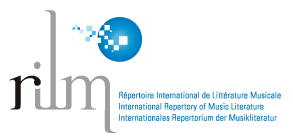Hybrid Generation. Critical listening of Zapato 3´s discography from the musicological analysis for musical production
Keywords:
Recording Analysis, Musicology for Music Production, Record Production, Zapato 3Abstract
This paper studies the record productions of the Venezuelan band Zapato 3, at the time, one of the most important national rock groups. The methodology is qualitative and part of critical listening for the analysis of the mix based on the six criteria established by Owsinski (2017): balance, frequency, panorama, dimension, dynamics and interest; as well as a panoramic analysis of the disc based on the criteria of acoustic environment, transparency, musical balance, stereo image and sound color. According to the above, aspects of musical production, recording techniques and transmission of musical energy have been inferred. The corpus is made up of five record productions between 1989 and 1999, ten years marked by the change from analog to digital technology whose transition is defined by Luthar (2021) as “hybrid listening”. As a result, the modification of the audio was due to technical and creative possibilities that converged in the use of post-production techniques, such as the use of filters, compression, electronic processors, among others. The audio analysis was complemented with a documentary and bibliographic review of the band and was complemented with participant interviews: one with Eugenio Miranda, producer of the group's first album, and José Antonio Cepeda, music producer.
Additional Files
Published
Issue
Section
License
Copyright (c) 2022 Revista Argentina de MusicologíaATTRIBUTION-NONCOMMERCIAL 4.0 INTERNATIONAL
https://creativecommons.org/licenses/by-nc/4.0/
You are free to:
- Share — copy and redistribute the material in any medium or format
- Adapt — remix, transform, and build upon the material
- The licensor cannot revoke these freedoms as long as you follow the license terms.
Under the following terms:
- Attribution — You must give appropriate credit , provide a link to the license, and indicate if changes were made . You may do so in any reasonable manner, but not in any way that suggests the licensor endorses you or your use.
- NonCommercial — You may not use the material for commercial purposes .
- No additional restrictions — You may not apply legal terms or technological measures that legally restrict others from doing anything the license permits.
Notices:
You do not have to comply with the license for elements of the material in the public domain or where your use is permitted by an applicable exception or limitation .
No warranties are given. The license may not give you all of the permissions necessary for your intended use. For example, other rights such as publicity, privacy, or moral rightsmay limit how you use the material.







